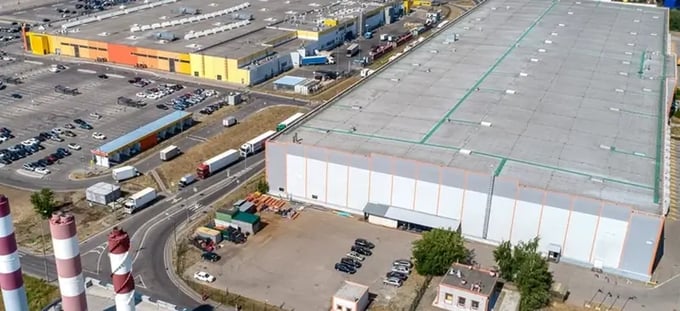Companies worldwide are significantly reducing costs and risks and improving uptime and asset lifespan by using Internet of Things (IoT) systems not only to prevent and react to problems but to predict when an issue or failure is likely to occur.
This should come as no big surprise: an inevitable consequence of the spread of machine learning software along with larger bodies of data for analysis mean we can predict when the failure of a machine or structure might happen. We also can now detect the earliest possible signs that there might be a problem.
Using IoT technologies to detect issues before they cause any damage or cost you anything is one of the best ways to maximize their value to your business. Accurately anticipating problems is obviously better than only preventative measures.
But if you're new to IoT – you've recently invested, or are looking to invest, in these technologies, it's useful to think about how it works in practice.
To help you, we're going to look at one of the most common business assets: the flat roofs of commercial buildings, and how IoT can help you reduce maintenance costs and extend their lifespan.
Predictive maintenance in practice: Your flat roof
Why is the roof flat?
Before we go further, we want to clarify a few things about roof and building design, as they are essential for giving context to why we have roofs that need IoT support in the first place.
Technically, flat roofs are rarely flat – they usually vary between a 1- to 10-degree angle. We more accurately call them low-slope roofs, but we say flat roofs as they look and seem that way,
If you think about a roof in terms of its primary function to keep water out of a building, a flat roof does a pretty poor job: they are not good at shedding moisture and have been known to collapse when too much snow accumulates on top of them. Global roof leak specialists ILD report leaks in more than two-thirds of the flat roofs they inspect.
We build flat roofs because, despite poor water protection, they are easier to build, structurally simpler, and cheaper to build and maintain than gabled roofs, particularly for large buildings. They also can serve as space for other things, such as the intake and exhaust of your heating and cooling (HVAC) systems.

Flat roofs are worth it… barely
Water intrusion accounts for more than 70% of all construction litigation, despite only accounting for around 2% of construction costs. Part of the reason for that is that roofs, and most especially flat roofs, heavily rely on the quality of both materials and craftsmanship to be effective at keeping the elements out.
There are a few different common flat roofing materials we use to keep water out of our flat roofs as preventative measures:
- Built-up roofs (BUR): This is the oldest approach to waterproofing a flat roof. Hot asphalt or coal tar is applied over the surface with a mop that, once cooled, creates a waterproof membrane.
- Bitumen roofs: Created as an alternative to BUR, bitumen roofs use the same process but add reinforced polymer cap sheets that make them more flexible, especially in colder climates.
- Single-layer membrane roofs: As the name suggests, these are much thinner than the other types of flat roofing. They can be made from several possible materials but are commonly a type of plastic composite, such as neoprene, polyvinyl chloride (PVC), and synthetic rubber.
So why do flat roofs leak so much water? As flat roofs age, the material they are made from slowly degrades before it eventually fails and begins to leak.
Other common sources of leaks include:
- Tears in the roof membrane.
- Gaps between roof sheets (a feature of bitumen roofs).
- Places where the roof meets an opening: for drains, exhaust or HVAC systems, or skylights.
- Where the roof meets the wall.

What can the IoT do for flat roofs?
Flat roofs tend to fail in similar ways. This gives you an excellent opportunity to use IoT-based preventive maintenance, stopping a leak by monitoring the roof's state rather than waiting until water gets into the building.
There are three significant areas where sensors can be deployed:
-
Between roof layers
Because all common flat roof materials are layered in one way or another, it is possible to deploy sensors with the proper form factor between roof layers. You can monitor for any water leakage as the roof ages and degrade or split. This has the added benefit of pinpointing where a leak occurs, as water can move unpredictably through roof layers. The leak inside the building can be far from where the roof material has degraded.
-
Beneath flashing and sealant
Flashing and sealant – used to protect your roof around all those gaps – usually has a much short lifespan than the roof material itself. With IoT sensors, you can find out when these materials begin letting in water and immediately fix them before there's any damage to the building itself.
-
Watching the roof
You usually see pools of water on flat roofs where there has been a sag in either the roofing material or the building structure beneath it. With modern IoT sensors, you can catch this early with sensors that monitor the roof for sagging, similar to a laser level, but without having to go up to the roof yourself.

Our Severn sensor can protect your roof
Our Severn sensor is one such sensor that can be deployed between roof layers and around flashing because of its thin and flexible form factor. If you'd like to learn more about how this works, check out our use case on using LAIIER's technology to predictively maintain your roof and create value for building owners, insurers, and roofing services.